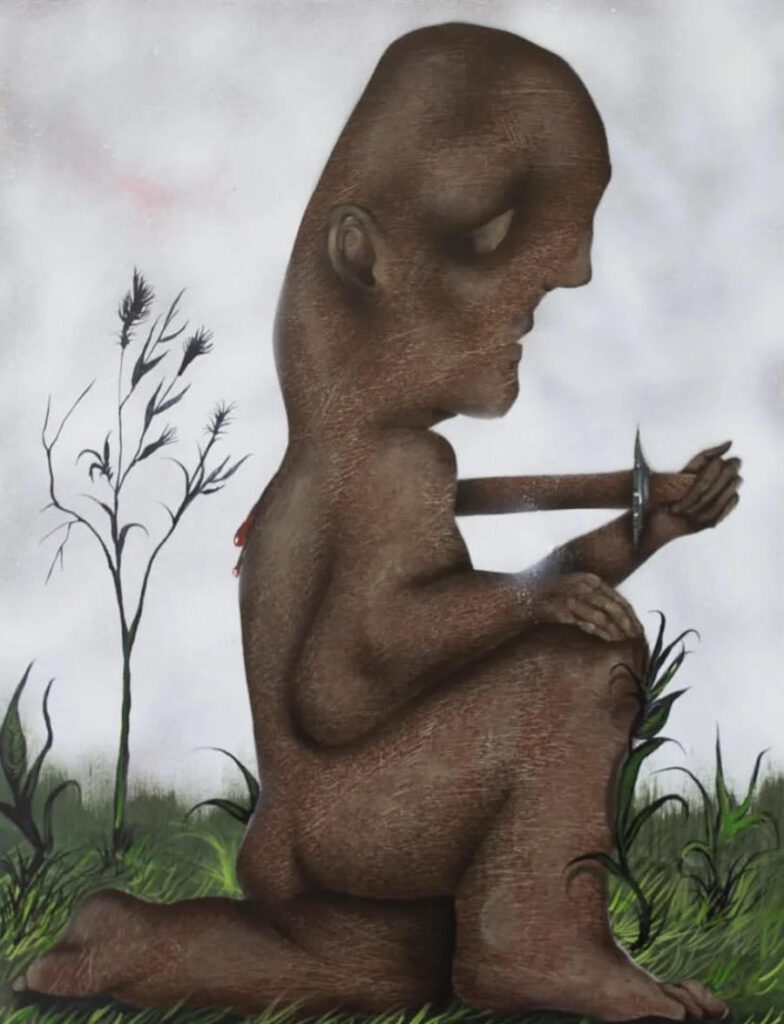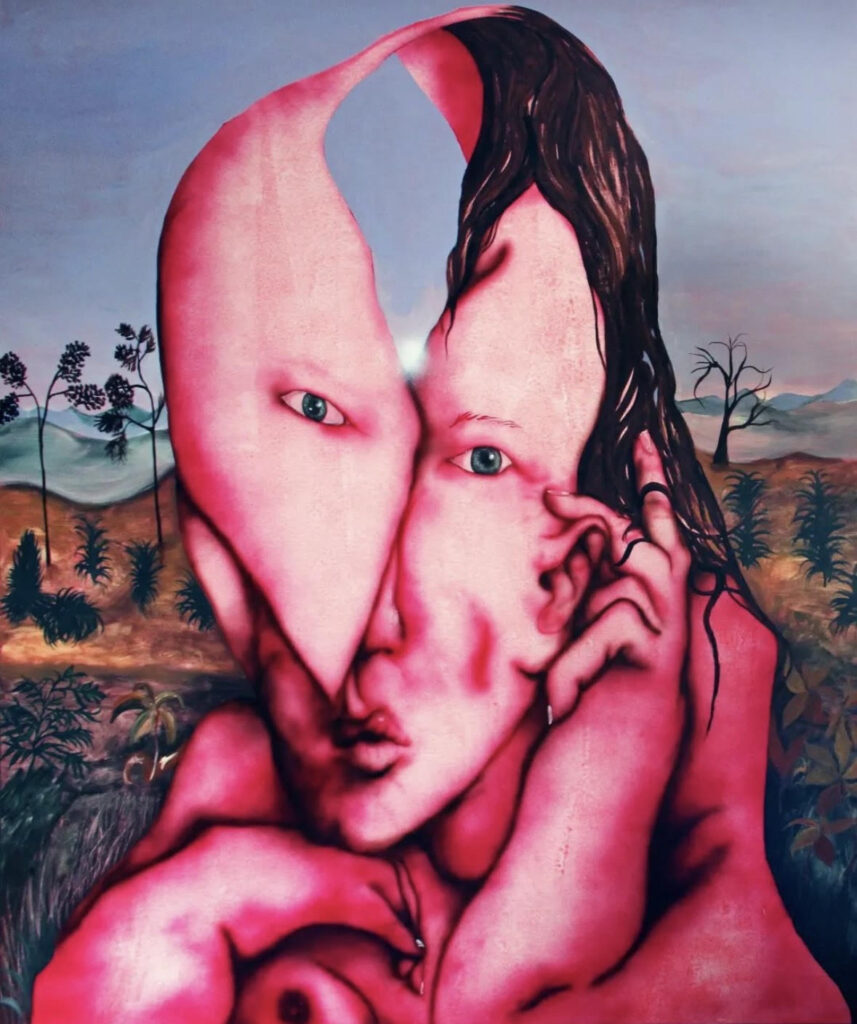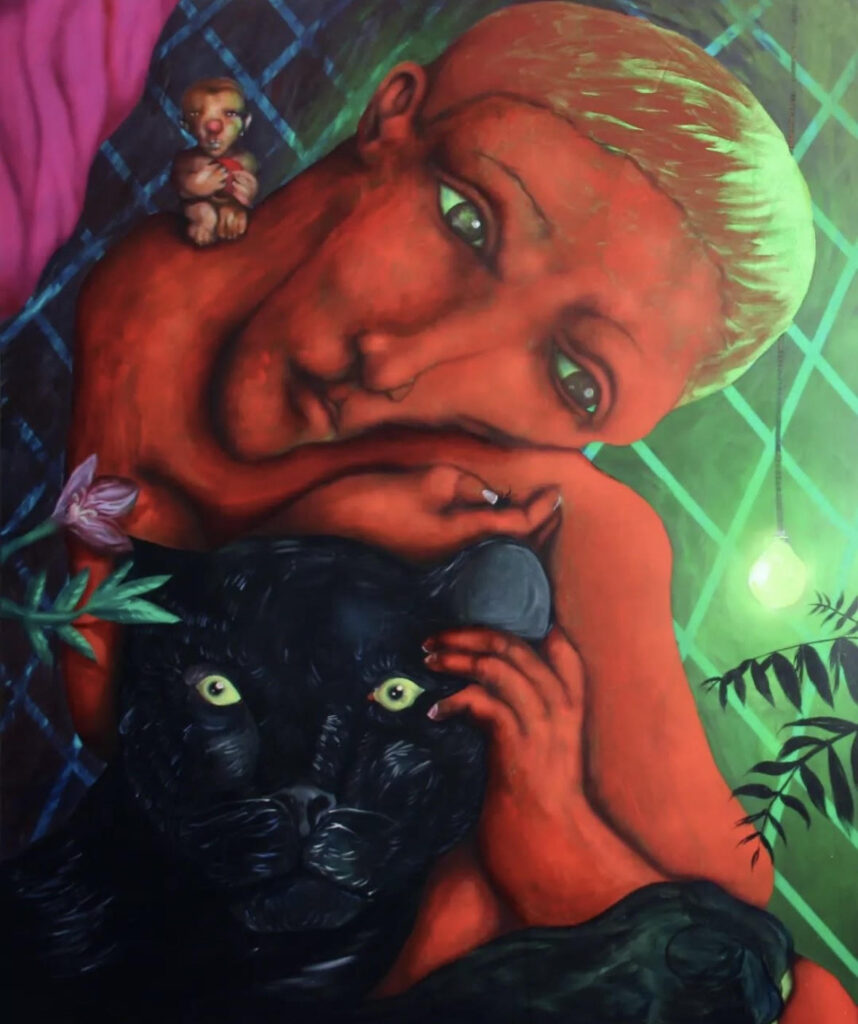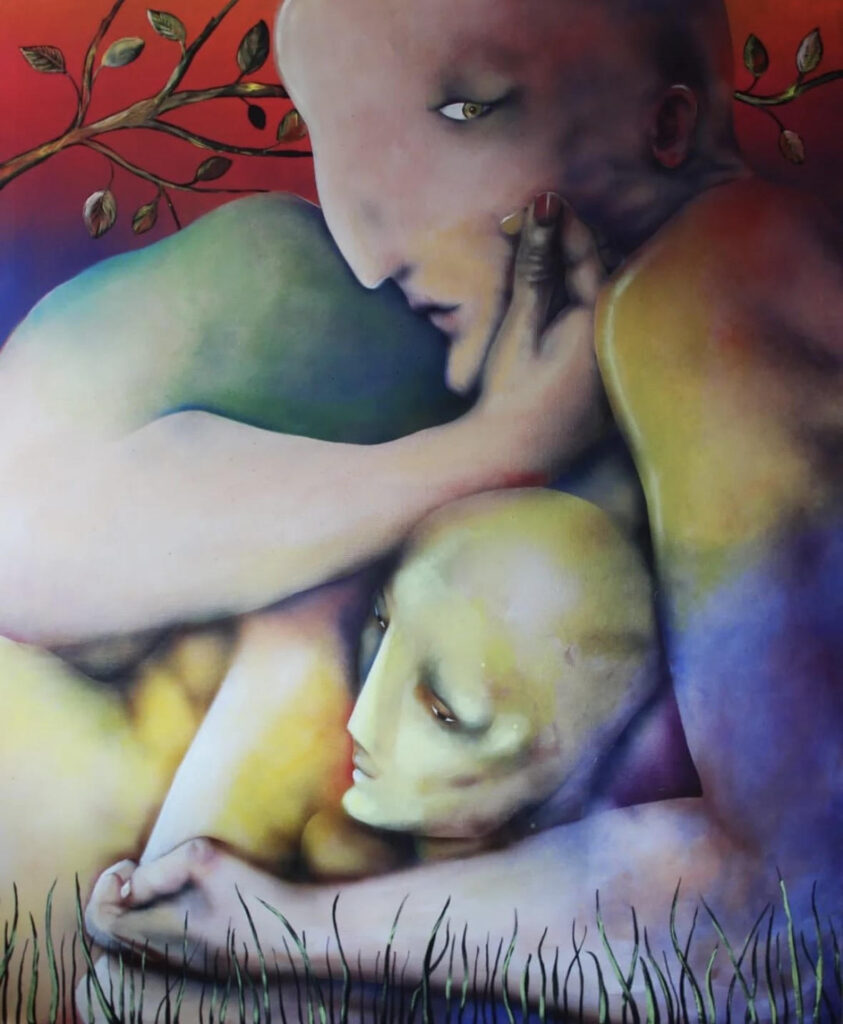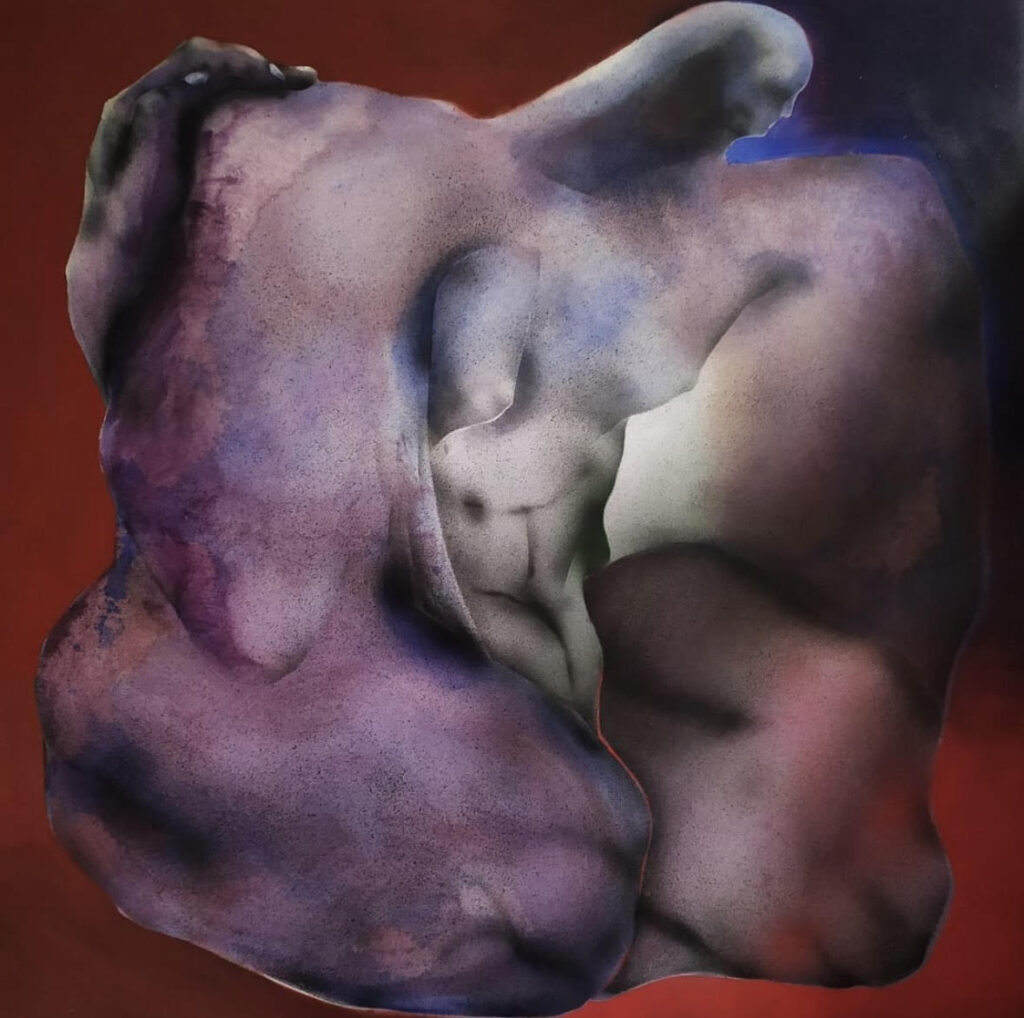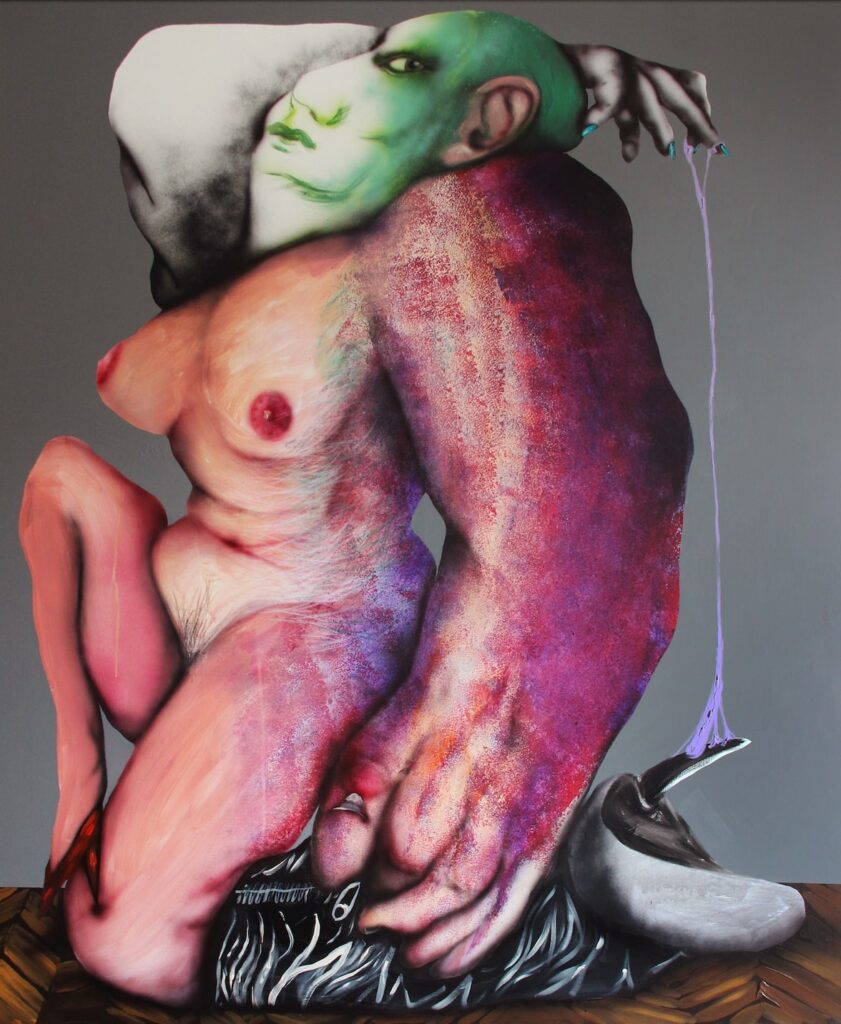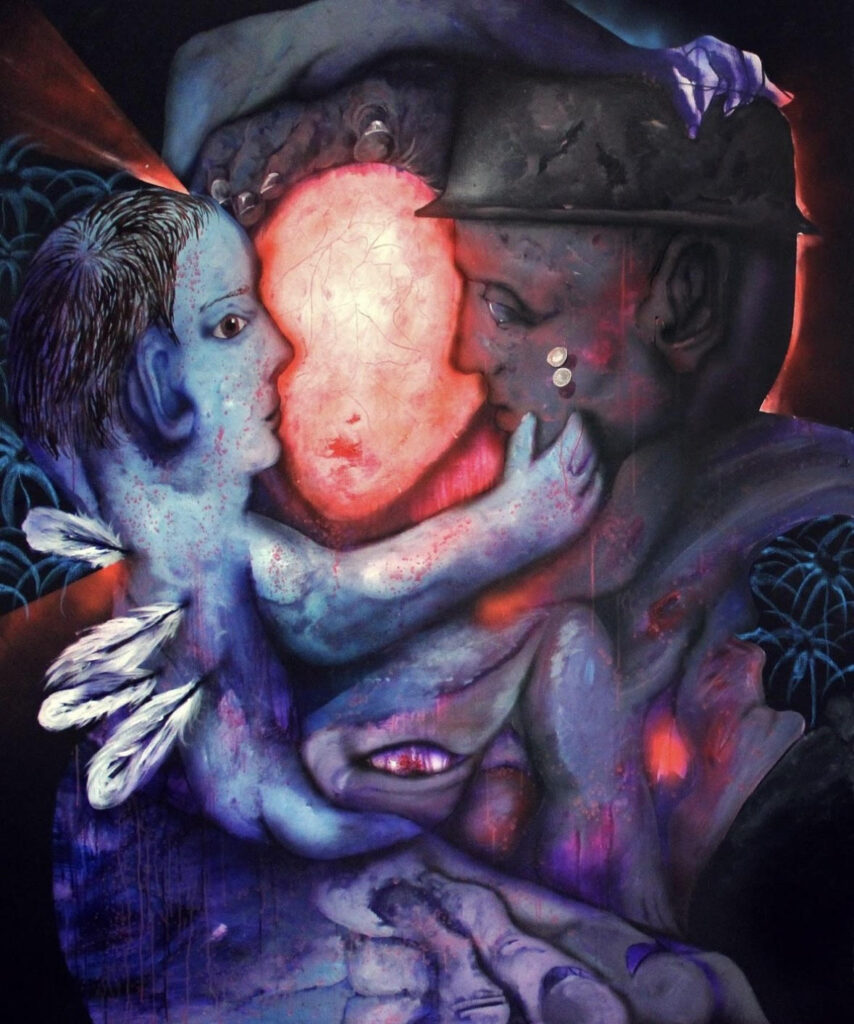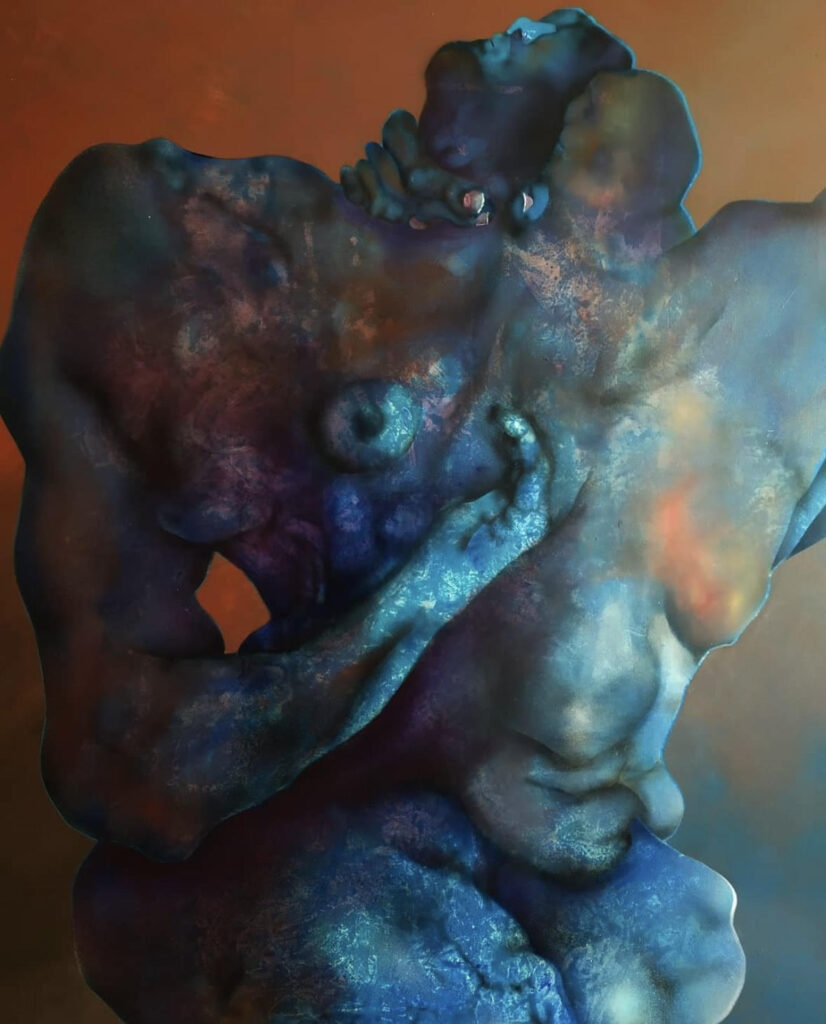Share this
Today, I would love to introduce you to Szaweł Płóciennik, a Warsaw-based Polish fine artist born in 1987. I met Szawel, and experienced his monumental paintings at The Cabin of Danny First, in Los Angeles, about a year ago and was immediately impressed. His artworks are nothing like I have witnessed before. Szawel, a graduate of the Faculty of Painting at the Academy of Fine Arts in Warsaw, creates a world of human and non-human subjects. Asexual, immersed in poetry and myths, his subjects are the reincarnations of the artist’s desires, traumas, dreams, and catastrophes. They are creatures that he gives birth to with more or less effort. His paintings tell about the inner self, transformed by the symbolism of Slavic mythology.
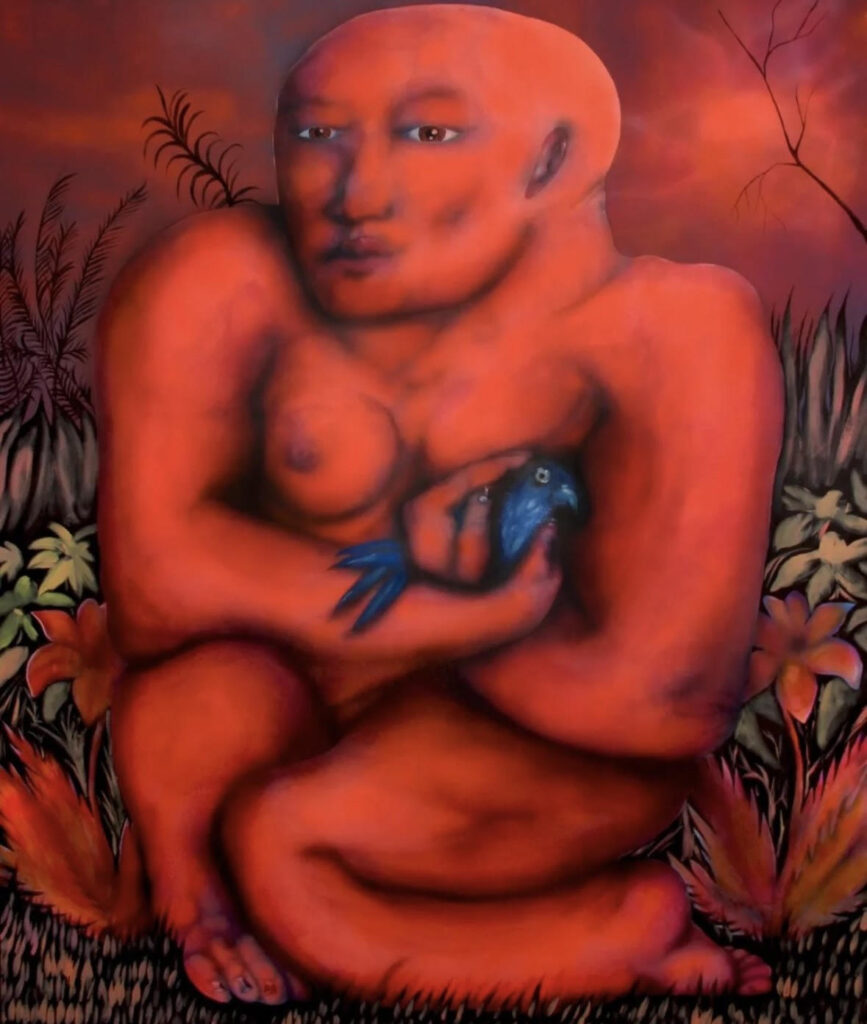
Szawel! Thank you for taking the time to speak to me. Could you describe yourself to those who do not know you?
First of all, I am a painter, but I also deal with music and other fields of art. I live in Warsaw, Poland. I graduated from the Academy of Fine Arts in Warsaw, at the painting department. I was born in 1987. I am a father and stepfather, a partner and it seems I’m also not a bad friend.
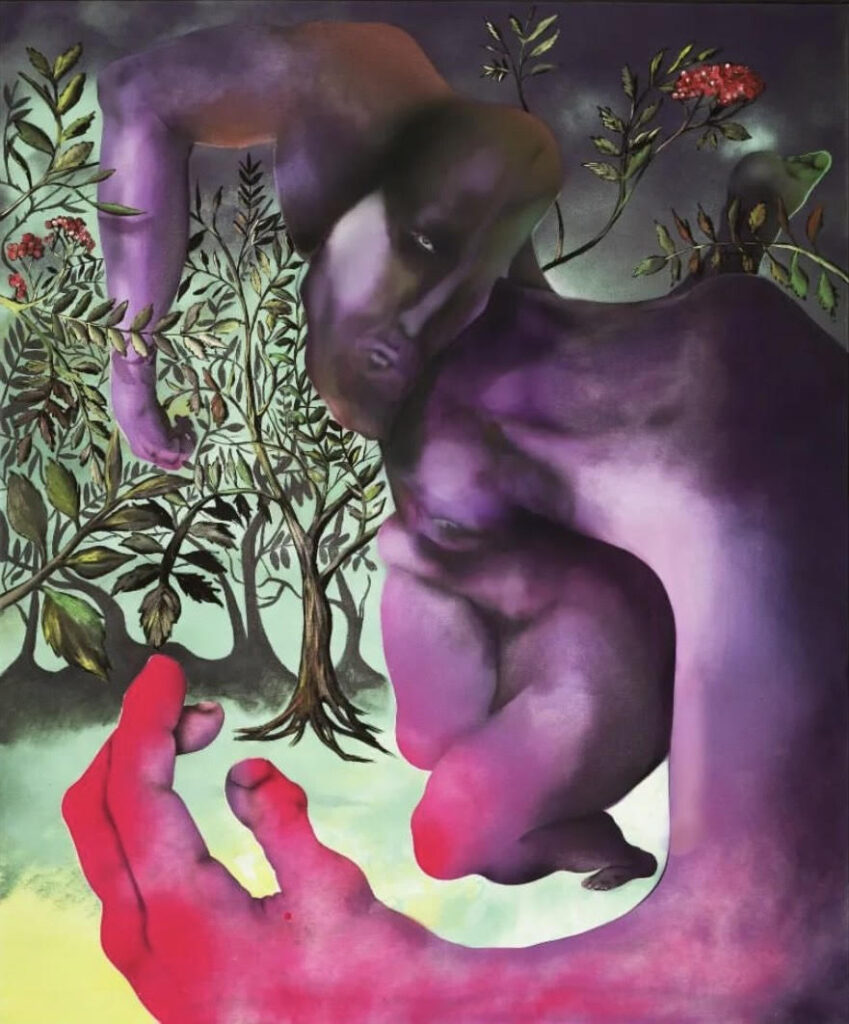
What is a regular day like?
In the early morning I take my son to kindergarten, then I go to my studio on Nowy Świat street in Warsaw. My studio is located in the central part of the city, in an old, historic tenement house. A deer peeks in my window. Which is quite a surreal experience. A large deer sculpture stands in the courtyard. In the studio around 9 o’clock I start my working day. I paint every day, from Monday to Friday until 5 pm, sometimes I deal with other matters related to my creative activity. I like to fill my day with little touches that help me create my works. I often visit the nearby antique shop in search of interesting vinyl records and books. I have a gramophone in my studio. I like to paint with musical accompaniment. I usually eat lunch at the local milk bar. The food resembles dinners at grandma’s, it’s a bar with classic Polish food. I do walks. I’m going out for a cigarette. However, once I get into the painting I’m working on, I don’t do anything else but paint. I spend afternoons and evenings with my family. Before going to bed, I often plan the next day or analyze what happened to me the previous day.
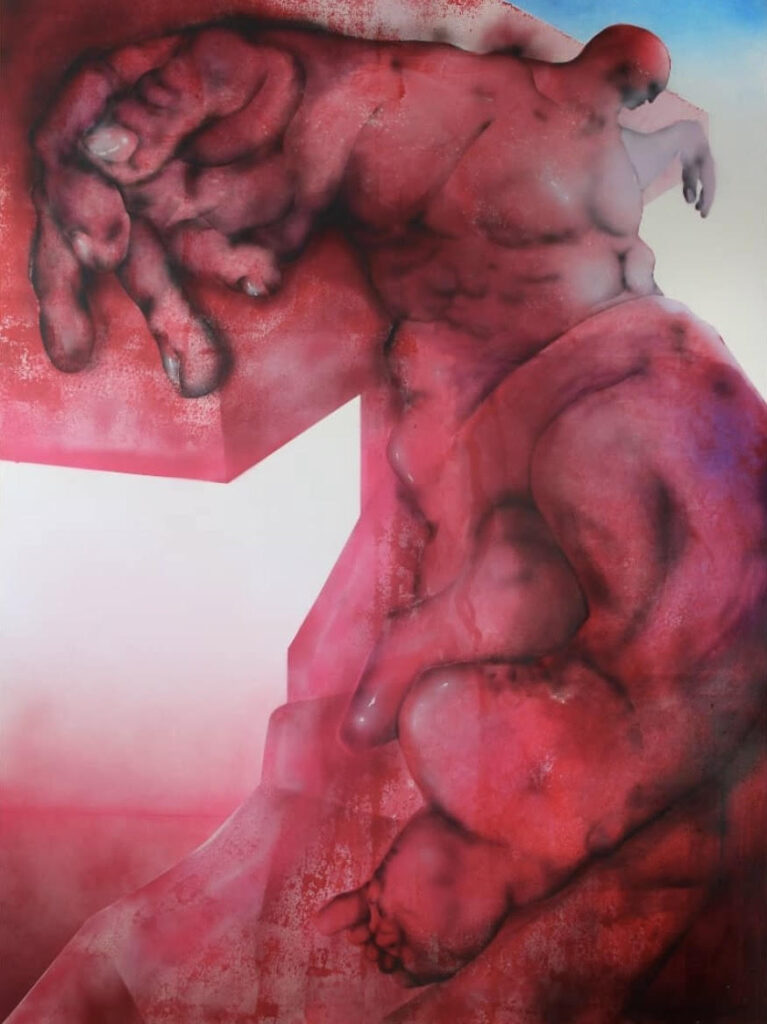
Can you describe your artistic journey and what drove you to choose this career path?
I’ve always had a great desire to tell stories. I was also a big fan of John Lennon as a kid. The path of an artist, musician, painter or performer seemed to me something carefree and wonderful. But most of all, I think I was afraid to go to a normal job. Perhaps it was out of fear of a certain order in my life that I chose an artistic path that I associated with freedom. I wanted to live my own life, pursuing my dreams and my own goals. I used to draw comics as a teenager. Later, I even released several albums in official comic book publishing houses in Poland. The publication “Pinki” is closest to my heart. This is a graphic novel I made based on the memoirs of the first Polish hippie, Krzysztof Brandt, pseudonym “Pinki”. The album was released in 2014 by Kultura Gniewu publishing house. Music was also important to me. From my youth, I formed bands with friends, mostly orbiting around genres: cold wave, rock n roll, roots and rap. So far, I’ve been involved in several projects singing and playing the guitar. Painting was the fulfillment and at some point the accumulation of all my previous aspirations. I got accepted to the Faculty of Painting at the Academy of Fine Arts in Warsaw and it was a breakthrough step. I’ve met people who share a similar mindset. I developed in this direction and at some point painting became something that dominated all other fields. However, I believe that everything draws from and results from each other. This helps, especially me as a person, when I have the opportunity to interact with various media. It’s like catching your breath. Stimulation and freshness are very important to me. I also think that a certain kind of emotionality and experience determines many people to create. Art is also a tool of sublimation, it helps to deal with some difficult matters. It helps you live safer. I like to feel safe and I have a lot of worries and fears. That’s why I chose a safe path for myself.
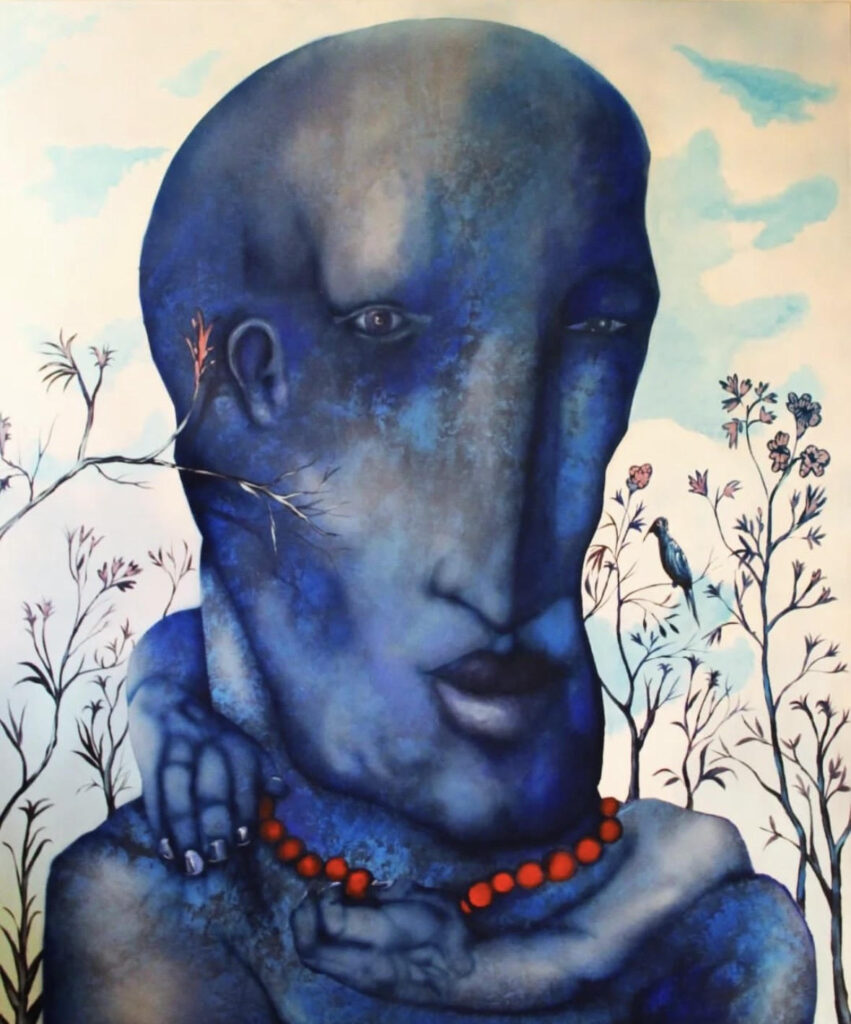
What does your creative process look like?
I start with setting the musical landscape. When it comes to work, I like to have something that flows in the background and doesn’t involve me too much in a literary sense. So I choose classical music, today it was for example “Villa – Lobos, Bachians Brasileiras”. There may also be something closer to electronic music, like Vangelis or Tangerine Dream. I also love the atmosphere of the Warsaw Village Band, a Polish folk band. I sketch and draw a lot. This drawing is the basis for my paintings. I’m not moving my hand. I try to make the line intuitive and free, and the figures subjected to spontaneous transformations and deformations. Of course, the body and certain anatomical analogies are important to me, but I strive to create my own kind of corporeality. I create my own creatures. It’s good that they are a bit intriguing, maybe perverse, dominant and accentuating their own presence in the image. My own private zoo. Then I choose the form that works with me the most emotionally and aesthetically at the moment. It happens, however, that I draw something with a certain narrow assumption, with some idea. I translate the sketch onto canvas-sized paper. So I make a larger drawing that will serve as a map for the templates that I will use when translating the drawing into an painting. I cut the paper with a knife. Such stencil fragments help me when working with spray paint. The first stage on the canvas is to make an expressive and slightly crazy underpainting. In this case, the canvas is usually on the floor. The farther ahead, I try to close the form and master it. Finally, I finish the painting with classic brushes. I also put glazes from oil paints. Sometimes several layers. This gives amazing depth effects. I like when the image is harmonized. When you feel thin planes, when the layer from the very bottom shines and works, but also when these fragments of the painting are outlined heavier and stronger. I mix techniques. I use sprays, airbrushes, stencils, oil paints, acrylics and pastels. No matter how much I run away from objective reality, it is crucial for me to capture the atmosphere of the painting, which consists of hosts of smaller micro-atmospheres. These micro-atmospheres are: gestures, objects, chiaroscuro, arrangement, composition and a whole lot of dependencies that build a larger case. This matter, this spirit or idea, however, is something that I feel like doing at a given moment, or something I want to get rid of as soon as possible. The last stage of the process is a little psychoanalysis of what has resulted. Often paintings give me some answers as to why what appeared on them long after the work was done.
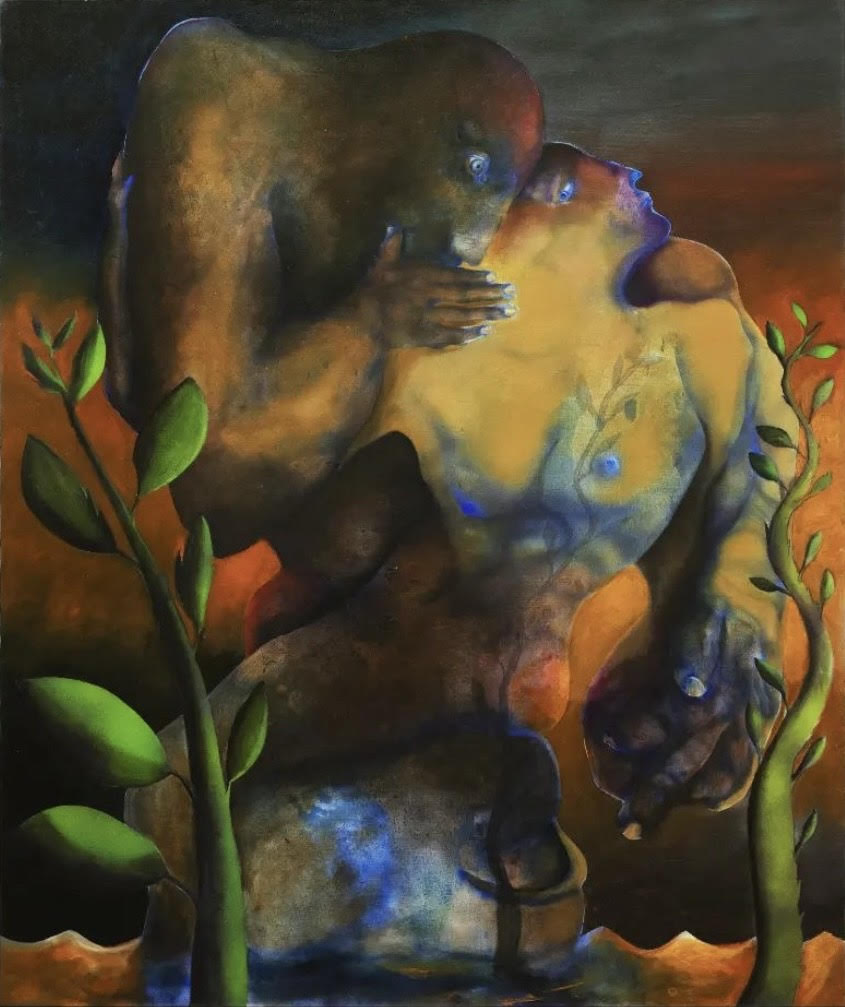
Can we dig deeper into your unique painting style, inspiration, and message? What themes do you pursue?
I think that my style results to a large extent from the comic line I practiced before the Academy. It was a mindset like, I don’t need a model to create a hand, a facial expression, whatever. So there are a lot of my patents and solutions in these works, let’s call it freedom. The academy gave me a stronger foundation of observation, which I also use in the proportions of my characters. I think that from a formal point of view, I like a painting to have autonomy and identity, a certain personality. That is why, to a large extent, these are works with a strong and expressively composed figure who, as it were, signs the painting with himself. Of course, the starting point, or rather the exit point, because as I mentioned, I don’t build a concept before painting, there are my own experiences, memories, traumas, catastrophes and euphoria. However, they operate from a subconscious position. I work in cycles. The series “Czart” consists of black and white paintings in which expression and algorithmic associations are important to me. While painting these things I often listen to black metal. The series “Niedola” are mostly figures of crucifixion. In Polish culture and social life, it is quite an active motif, characterized by ambiguity. The worst thing is probably the guilt that was instilled in us in childhood by the church. Many people can’t handle it. These images are an attempt to do the crucifixion in my own way, on my own terms. I also have the “Dola” series, which is about parenting. A lot of touch in my paintings. There are also “Persons”, figures that I strongly immerse in the contexts of the pagan beliefs of the Slavs. “Persona” is Carl Jung’s term that we all wear masks, depending on the situation we are in, we put on a different kind of sensitivity. The absence of these masks may indicate mental disorders. Most of my titles are enigmatic slogans from Slavic demonology, or mathematical operations that describe the composition, or a certain idea of the painting. “Mamuna” was a demon who took children in childbirth. “Dola” means fortune. “Niedola” lack of happiness, misery. Recently I painted “Plastuś”, a character from a children’s book. A little plasticine man. I remembered this book when my son and I read it recently. So I try to expand the spectrum of worlds involved in my painting.
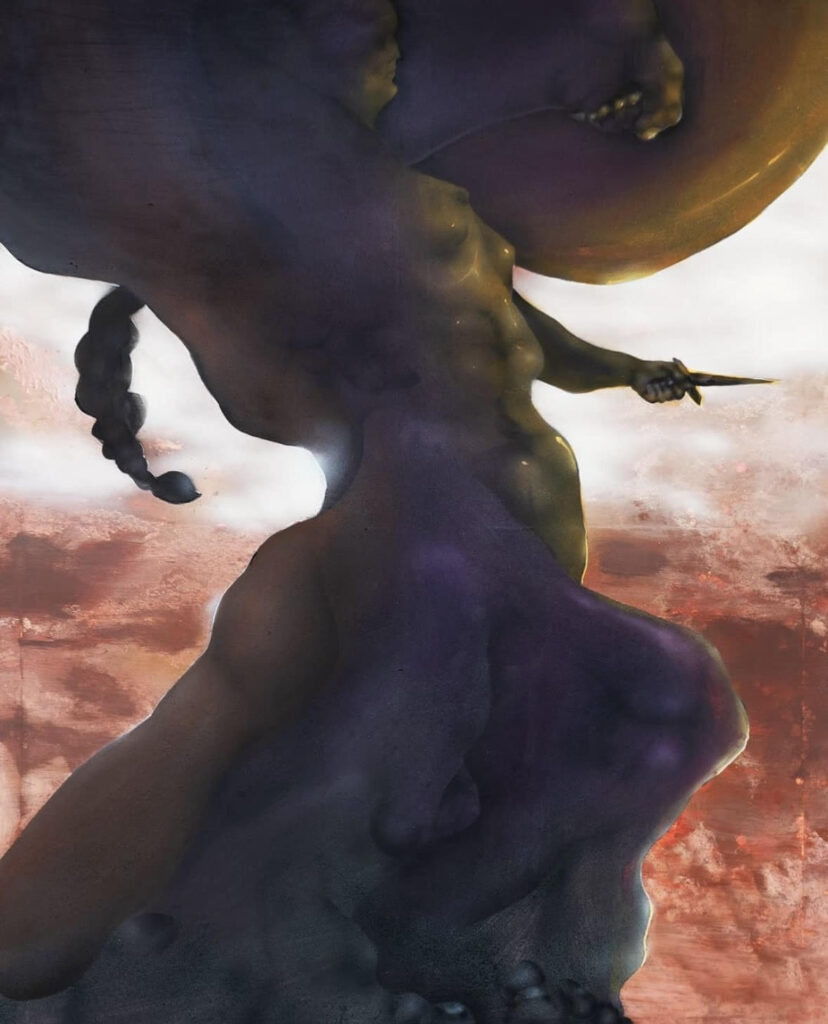
What keeps you motivated and interested in your work?
What motivates me most is probably agency and the belief that there are still many untold stories to be told. Painting itself, on the other hand, helps me maintain a relative sense of the meaning of everything that surrounds me.
What are the first things that come to your mind as necessary in your studio?
Lots of space. The one in the head and around.
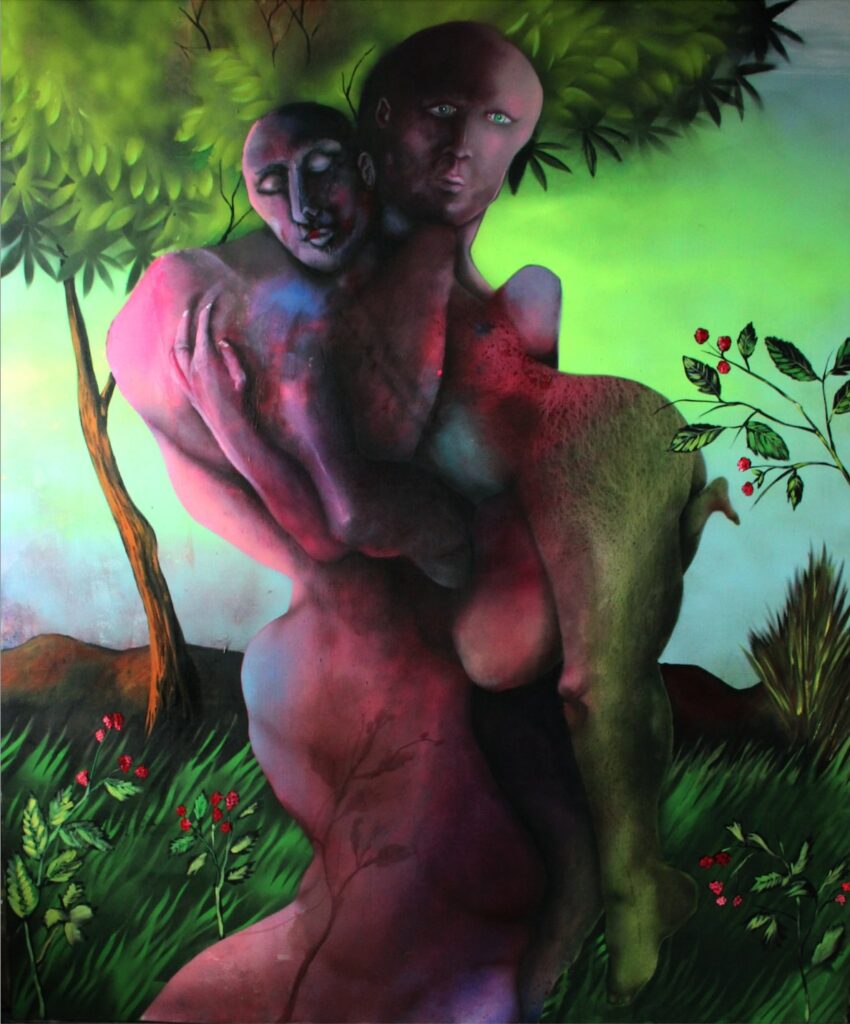
Which of all places where your art was exhibited is the most memorable, and why?
My first stay in the USA was a fantastic experience for me. It was then in Los Angeles, having the opportunity to work at Danny First’s residency, that I met extraordinary people and many opportunities opened up before me. It was a different world for me. Like from a tale. I am very grateful to everyone who showed me so much warmth and support at that time. The exhibition at the Cabin Gallery was like a dream come true for me. Everything that follows is a beautiful sequel. The exhibition in New York with Anna Zorina, was also something I will remember for a long time.
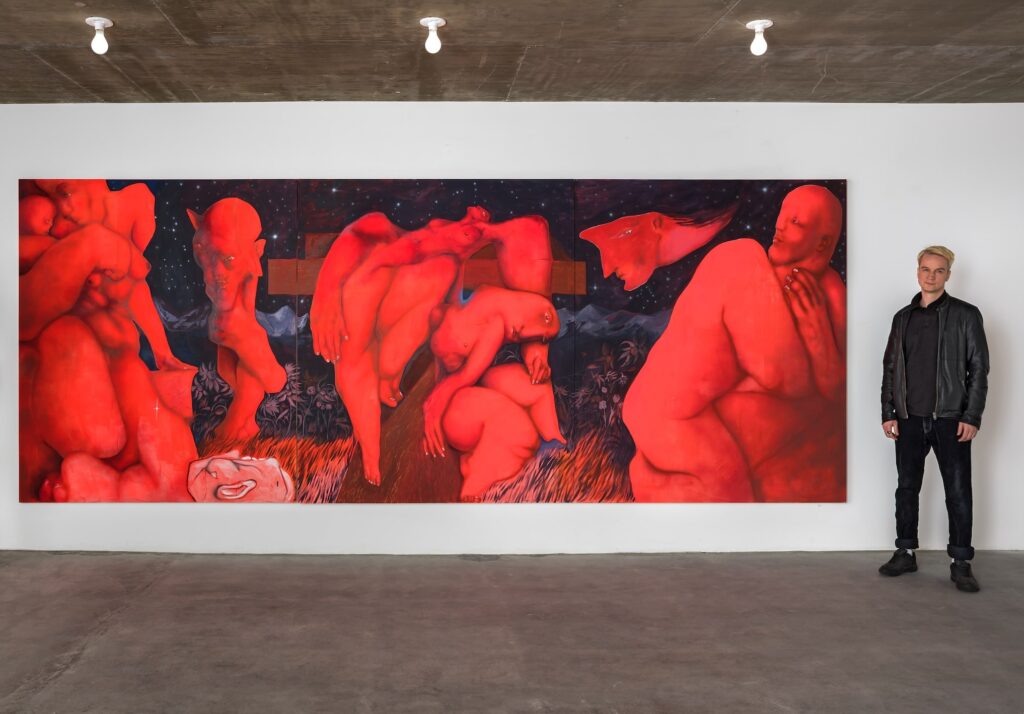
How do you see your work affecting societal issues and contributing to a dialogue?
I think that I want the observer of my art to find his own myths in it. The bodies of my characters are beautiful, although they may seem deformed and ugly. I would like to show with my paintings that there is no such thing as an ideal of beauty. And there is strength and beauty in our imperfections. Everything hidden inside us is the most valuable. Unfortunately, the world today often expects objective, shallow truths. My paintings are the voice of outsiders and the pagan song of the past. When we love, let’s love loudly.
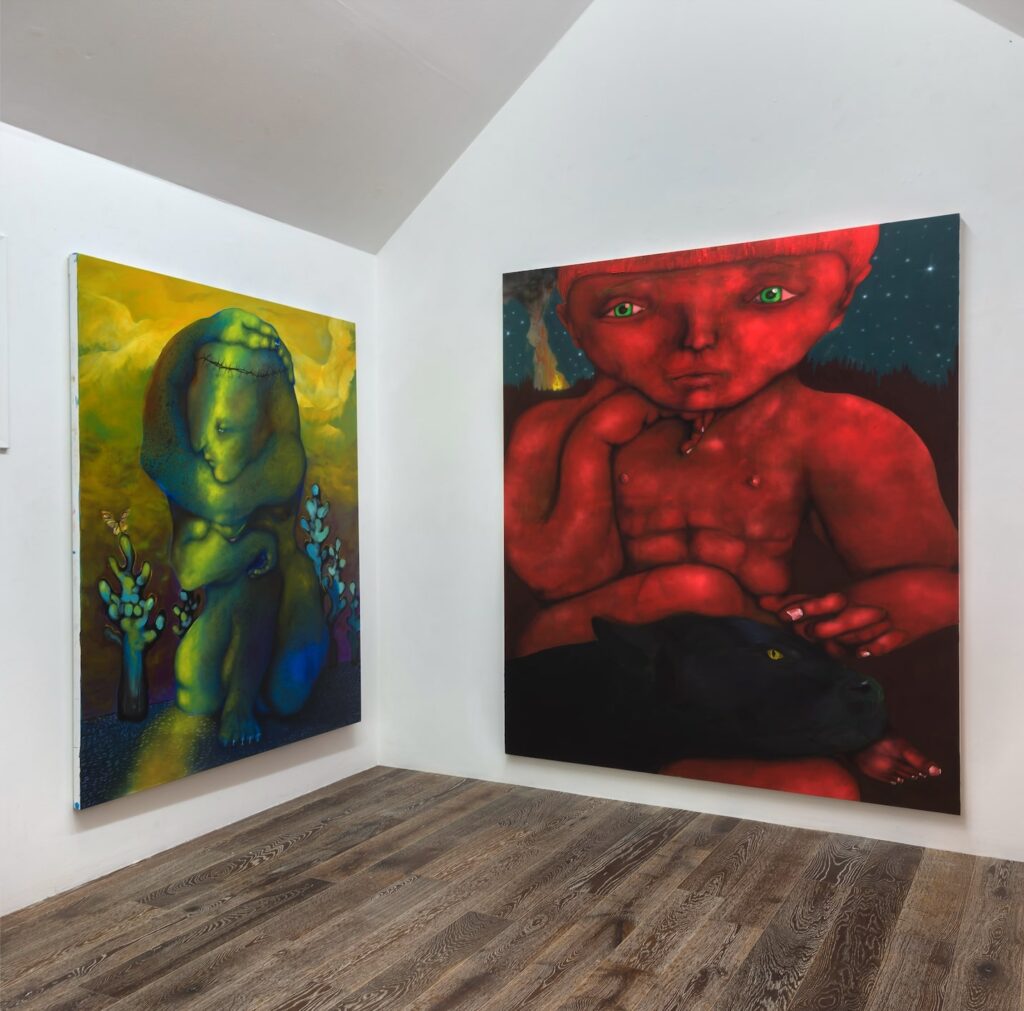
Name one of the most memorable reactions regarding your work?
At an exhibition in New York, I saw tears in the eyes of one of my friends who was looking at one of the paintings. It was strange for me but also very touching.
What do you like about your work?
I’ll leave that to others.
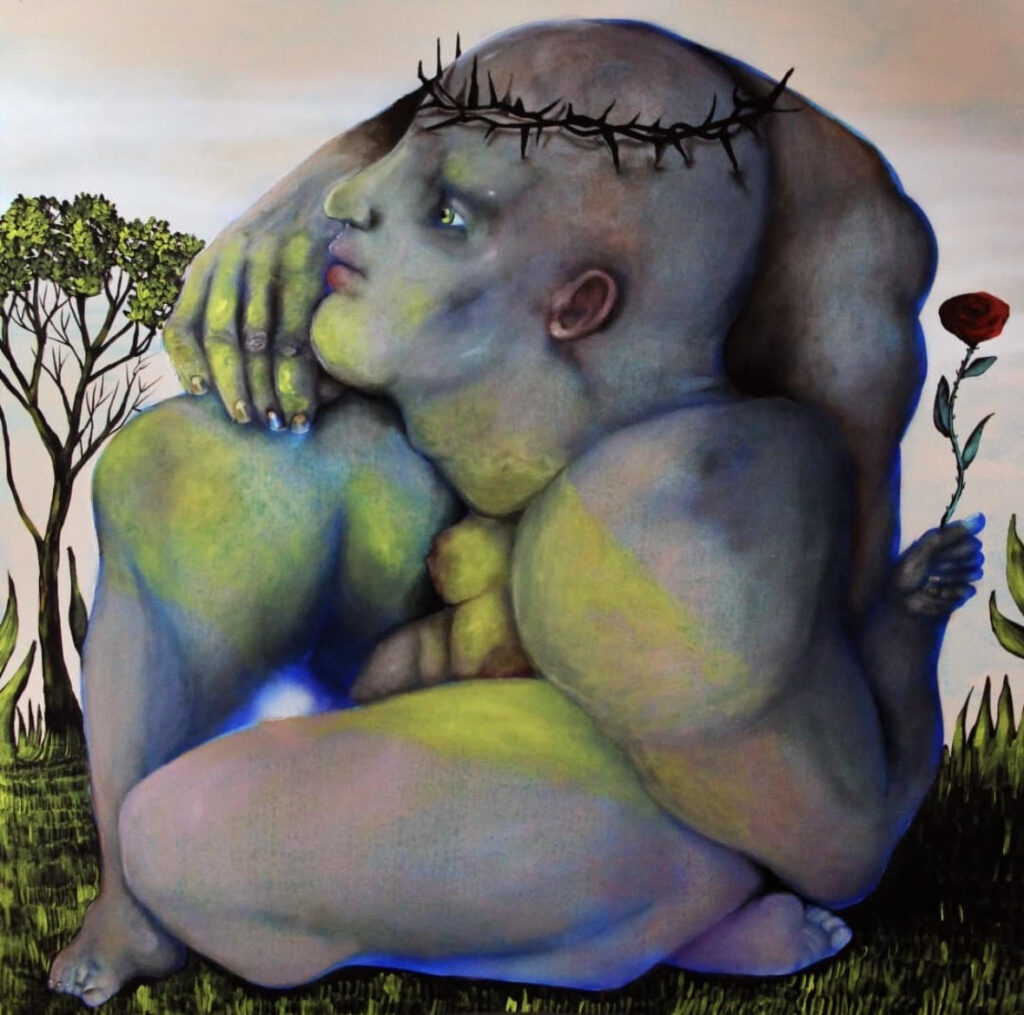
What do you dislike about your work?
I’ll leave it to myself.
What advice would you give to artists just starting, and is there one thing you wish you would have done differently in the first years of your art career?
Don’t work so much. It’s worth stopping and going back to some things with a distance. Sometimes I miss distance and I don’t care about rest, which is not good.
What is the best advice you were given regarding your art career as an artist?
My friend Robert Brylewski, a counterculture artist, musician and an important figure of the Warsaw independent scene, once told me: “in life you can be a wagon or a locomotive.” I remembered it for a long time.
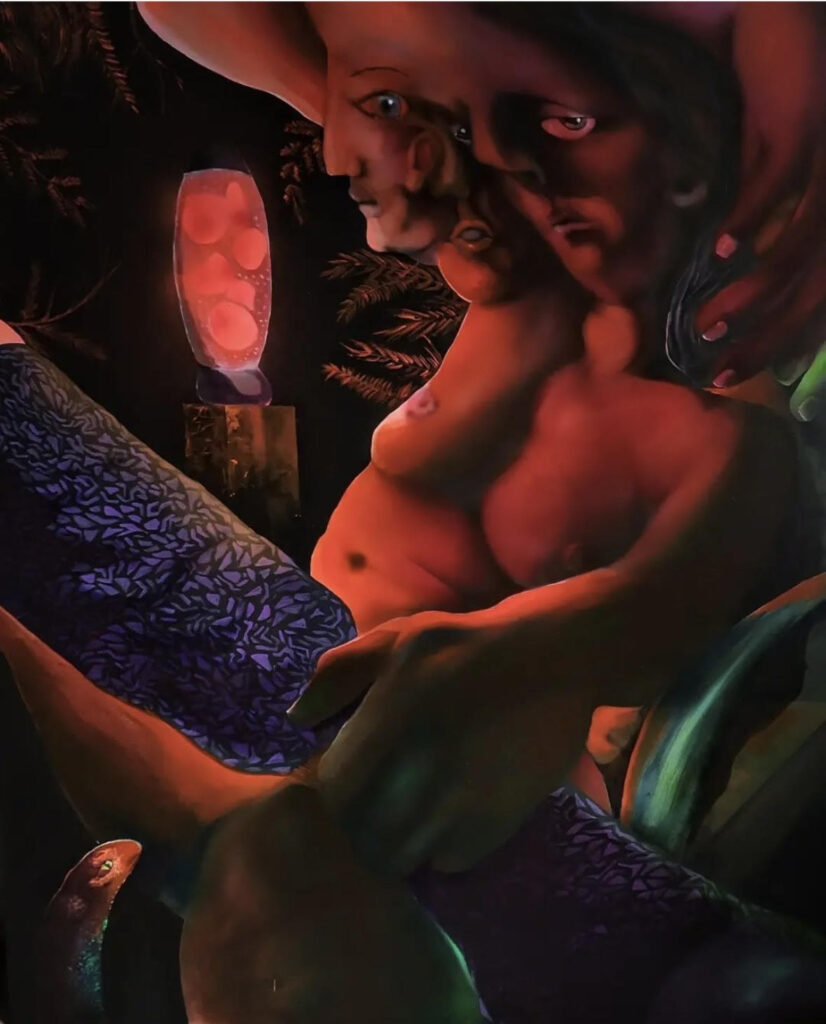
What jobs have you done other than being an artist?
I ran away from this opportunity, but I have to admit that I worked one day at a regular job. It was a clothes shop. I was sent to a warehouse where I sorted bras and underwear. Then I thought: “never again”. From more creative activities, but still far from the painting craft, I ran a radio show about comics, conducted drawing classes for children, and once also put together the stage for a Metallica concert in Warsaw. It was a physical job, we all hoped for tickets, but unfortunately there was no such possibility.
What does success mean to you?
Freedom.
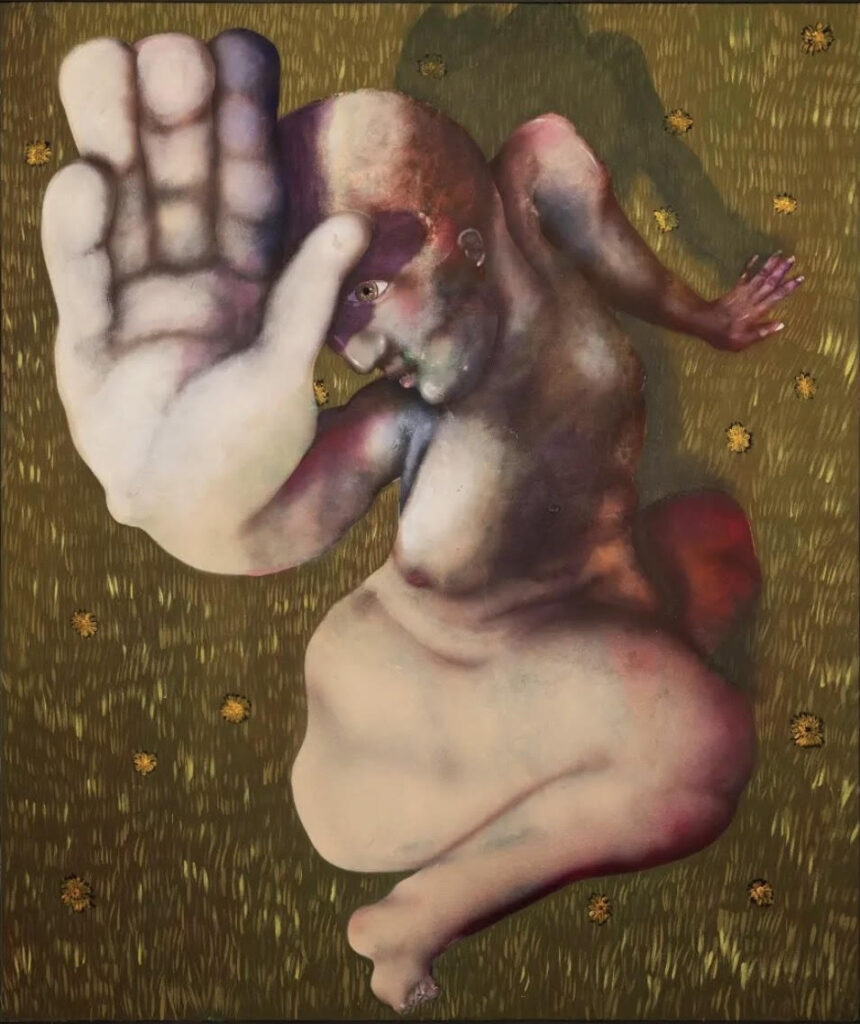
How would you like to be seen as an artist years from now?
The most important thing for me is to be more and more in tune with myself and have people I love around me.
What does being original or unique in the arts mean?
It’s probably about developing your own language, something that will be only yours and something you will feel confident in. This is hard to come by because we are often bound by our own expectations and self-righteousness. Self-criticism and rebuilding is the basis of the process in which we can create something truly unique.
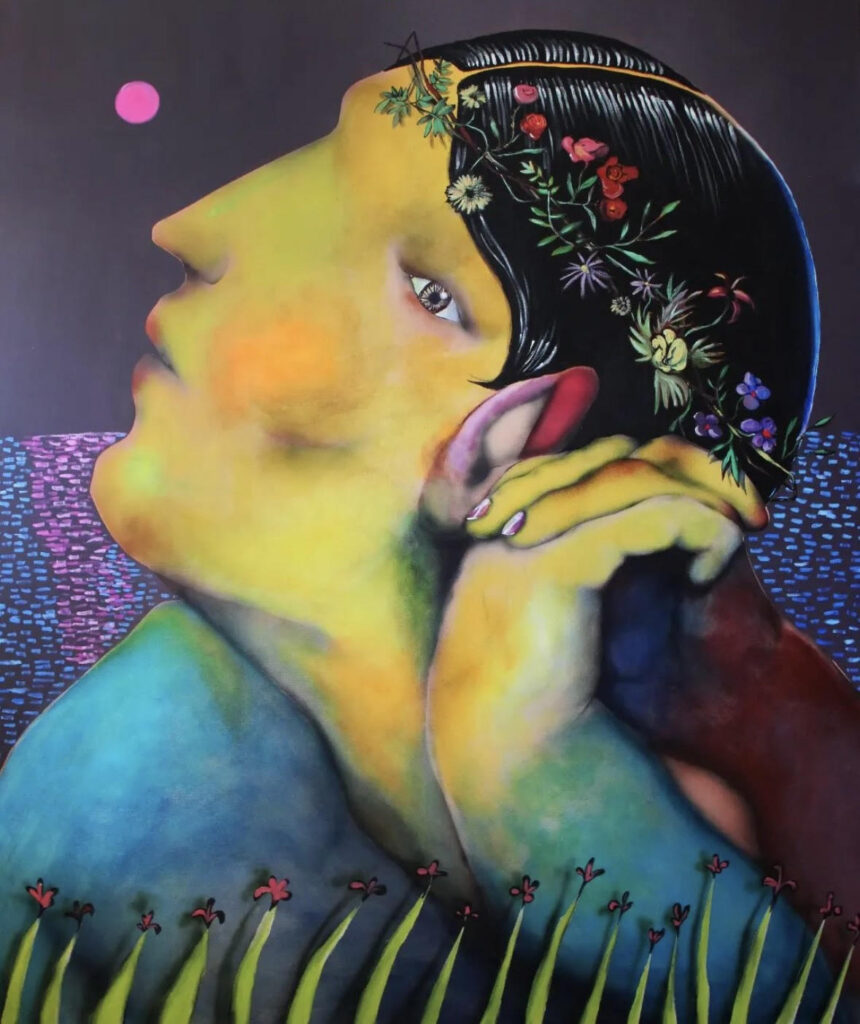
Name three contemporary artists you’d like to be compared to.
Sandro Chia, Marc Chagall, Antoni Rząsa. It wouldn’t be bad. It would be best to lose all comparisons but I don’t know if that’s possible in the hiberbolic world we live in though. I just hope I’m never compared to an AI.
What do you dream about?
I dream that my art will live longer than me.
What simple pleasures bring you alive?
The smell of wet asphalt and good news.

Name a book or film which grabbed your attention recently and why?
I’ll start with the great series “Cyberpunk Edgerunners”. A dynamic line and animation as well as a scenario dealing with the issues of growing up a teenager. I like stories where the individual is tossing with each other. Definitely, existentialism in literature is something I like to wade through and enjoy. That’s why I’ve been dipping into Manhood recently, the work of the French writer Michel Leiris. There are a lot of crises, the form of the book is interesting because the author writes without sugaring, about everything that is not necessarily polite and socially accepted. It is a description of the therapy that the author has completed and which he tries to summarize, reaching back to his innermost memories. He writes about manhood, similar to where I am now. An interesting mirror to see yourself in.
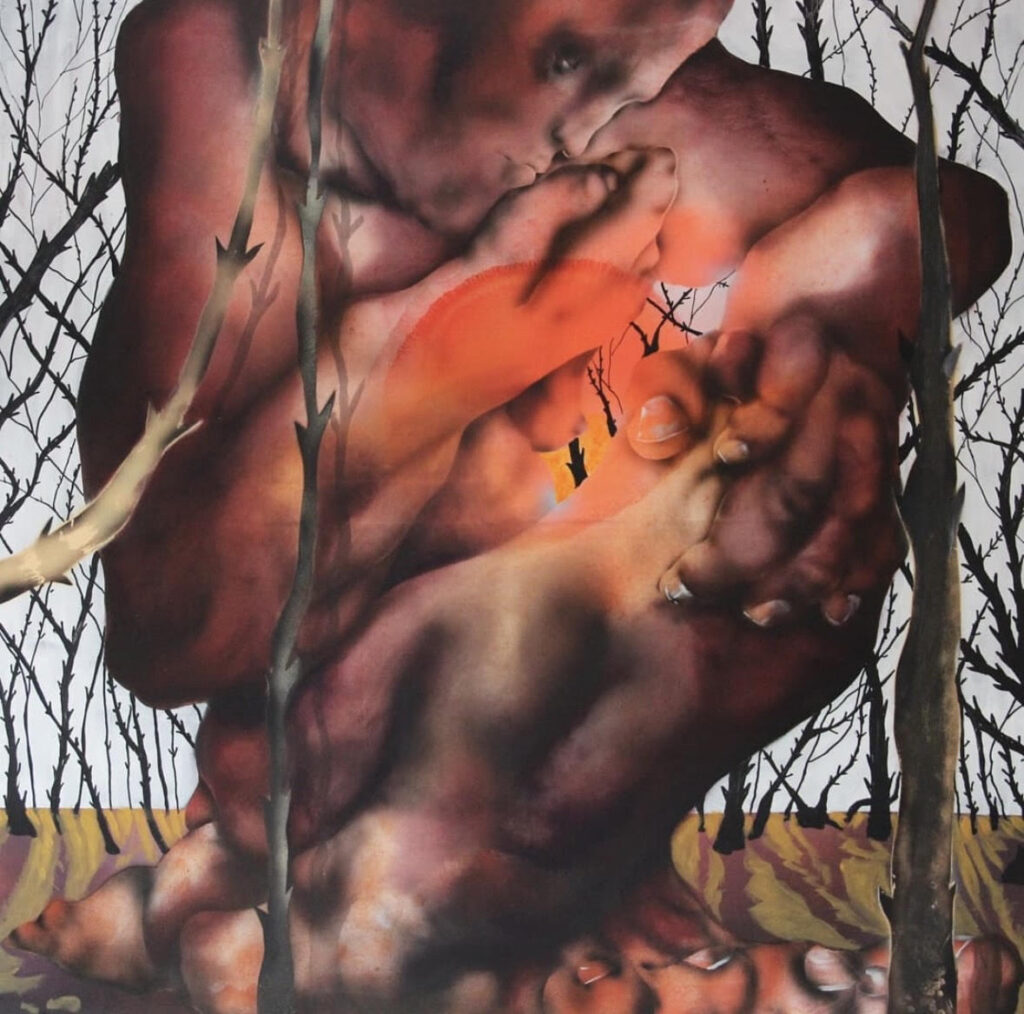
What is the first thing that comes to mind when you hear:
Poor – Human
Luxury – God
God – suffering
What’s next for Szawel Plociennik?
I am preparing several exhibitions next year. I hope to be able to announce them soon. I think that it will be possible to return to places where I have already been and show something new.
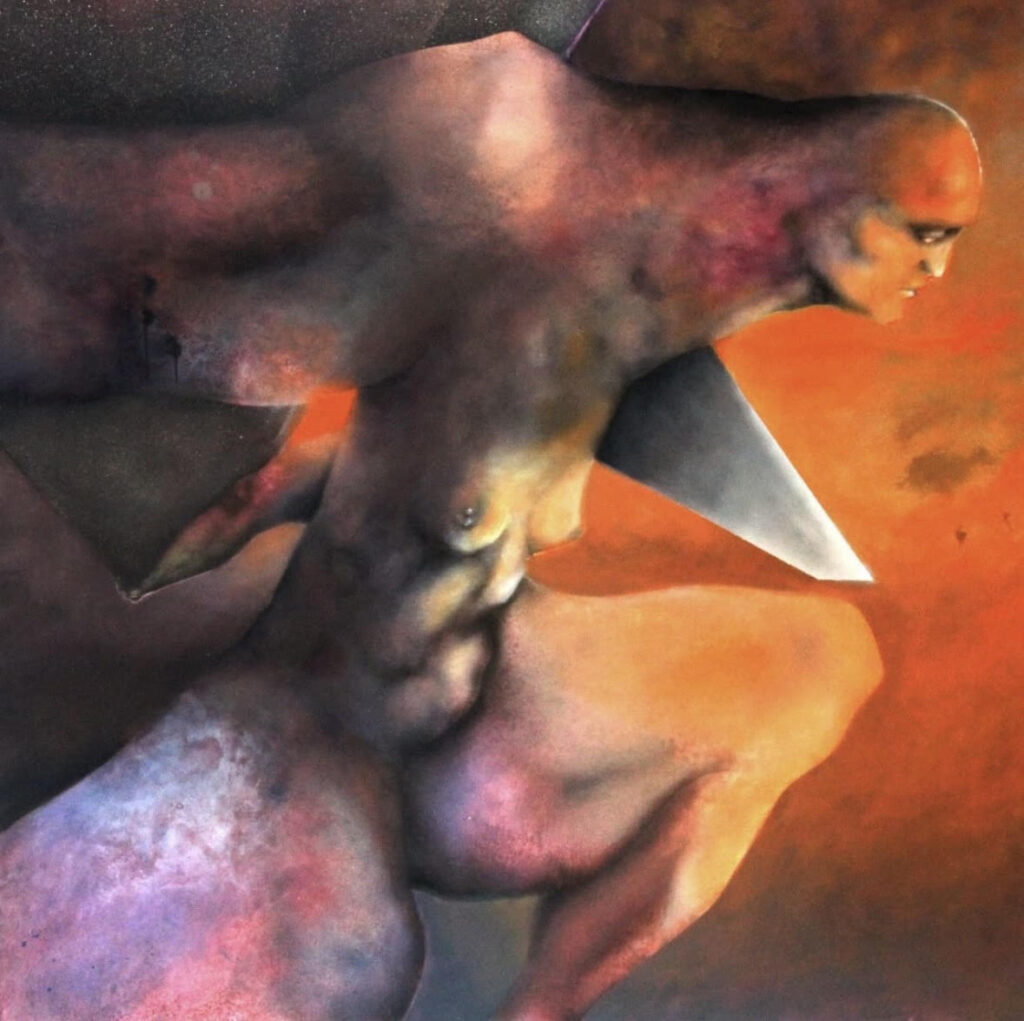
Finally, is there anything else you would like to share?
Thank you for the invitation and I pass on the power of good energy to all Overstandard readers. Art is born in pain, but I know that it also gives us a lot of joy. Greetings from rainy Warsaw.
